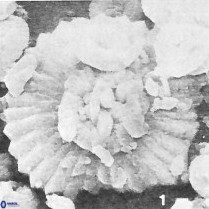Heliolithus bukryi
Set number: 2392
-
1
-
2
-
3
-
4
-
5
-
6
-
7
-
8
-
9
-
10
-
11
-
12
-
13
-
14
-
15
-
16
-
17
-
18
-
19
-
20
-
21
-
22
-
23
-
24
-
25
-
26
-
27
-
28
-
29
-
30
-
31
-
32
-
33
-
34
-
35
-
36
10µm
Holotype in the mobile mount.
Set number: 2393
-
1
-
2
-
3
-
4
-
5
-
6
-
7
-
8
-
9
-
10
-
11
-
12
-
13
-
14
10µm
In the mobile mount
Set number: 2395
-
1
-
2
-
3
-
4
-
5
-
6
-
7
-
8
-
9
-
10
-
11
-
12
-
13
-
14
-
15
-
16
-
17
-
18
-
19
-
20
-
21
-
22
-
23
-
24
10µm
In the mobile mount.
Set number: 2394
-
1
-
2
-
3
-
4
-
5
-
6
-
7
-
8
-
9
-
10
-
11
-
12
-
13
-
14
-
15
-
16
-
17
-
18
10µm
In the mobile mount
Set number: 2422
-
1
-
2
-
3
-
4
-
5
-
6
-
7
-
8
-
9
-
10
-
11
-
12
-
13
-
14
-
15
-
16
-
17
-
18
-
19
-
20
-
21
-
22
-
23
-
24
-
25
-
26
-
27
-
28
-
29
-
30
-
31
-
32
10µm
Set number: 2426
-
1
-
2
-
3
-
4
-
5
-
6
-
7
-
8
-
9
-
10
-
11
-
12
-
13
-
14
-
15
-
16
-
17
-
18
-
19
10µm
Set number: 2425
-
1
-
2
-
3
-
4
-
5
-
6
-
7
-
8
-
9
-
10
-
11
-
12
-
13
-
14
-
15
-
16
-
17
-
18
-
19
-
20
10µm
Set number: 2424
-
1
-
2
-
3
-
4
-
5
-
6
-
7
-
8
10µm
Set number: 2423
-
1
-
2
-
3
-
4
-
5
-
6
-
7
-
8
-
9
-
10
-
11
-
12
10µm
Set number: 2428
-
1
-
2
-
3
-
4
-
5
-
6
-
7
-
8
-
9
-
10
-
11
-
12
-
13
-
14
-
15
-
16
-
17
-
18
10µm
In the mobile mount
Set number: 2427
-
1
-
2
-
3
-
4
-
5
-
6
-
7
-
8
-
9
-
10
-
11
-
12
-
13
-
14
-
15
-
16
-
17
-
18
-
19
-
20
-
21
-
22
-
23
-
24
-
25
-
26
-
27
-
28
-
29
-
30
10µm
Heliolithus bukryi Wei, 1988a
Emended by Bowman & Varol, 2021: Large to very large [9.0–15.0μm] circular species of Heliolithus have a large birefringent disc [in plan and side views], a hollow, distinctly narrower column and a relatively wide canal with plug/tube cycle. The height of the parallel-sided column varies but is often slightly higher than the disc. Distinct depressions are present at both ends of the wide central canal.
The number of segments constructing the disc and column is approximately equal (about 24–40), and the segments of the disc and column are of similar width.
In polarised light, the dextrogyre extinction lines represent the distal view (e.g. Pl. 51, figs. 21–22), and laevogyre-type extinction lines characterise the proximal view (e.g. Pl. 51, figs. 23–24). When observed through the gypsum plate, the horizontal axis is associated with the blue sector on the distal side; however, the vertical axis corresponds with the blue sector on the proximal side. The disc and column are birefringent in side-view and plan-view. In particular, the column is highlighted whiteish yellowish in plan-view, and both the disc and column appear yellowish reddish-blueish birefringence colours in the side-view.
The column of Heliolithus bukryi demonstrates variable characteristics (e.g. height, width, tapering direction, etc.), a broad central canal filled by a plug/tube cycle. In plan view, this species differs from those of Caycedoa by the diagnostic birefringent pattern of its disc. The disc is non-birefringent in plan-view in the species of Caycedoa.
Heliolithus bukryi differs from other species of Heliolithus by having a narrower, higher column, a distinct plug/tube cycle, and a disc with pointed ends in side view. More specifically, Heliolithus iptamenosdiskos possesses a column that is only slightly narrower than the disc, a smooth plug/tube cycle and a disc exhibiting rounded ends in side-view. Also, Heliolithus knoxii displays a much higher column containing a narrow canal and an indistinct plug/tube cycle. In addition, the column of Heliolithus nefroeidis appears kidney-shaped. Heliolithus kolovos has a truncated/wedge-shaped column that lacks free length (i.e. does not extend above the disc). Heliolithus magnificus possesses a slightly wider disc than the column, a disc and column of similar height, and a column featuring a central canal and plug/tube cycle. Finally, in plan-view, Heliolithus bukryi superficially resembles Heliotrochus kleinpellii (i.e. double-disc form), but these two different species may be easily distinguished by careful focusing.
Bowman, A. R. & Varol, O. 2021. A Taxonomic Revision of Heliolithaceae - Applications in Resolving the Problematic Calcareous Nannofossil Biostratigraphy of the Paleocene. In: M. Montenary, M. (Ed.). Calcareous nannofossil biostratigraphy of the Stratigraphy and timescales. 6: 43-223.
Wei, W., 1988a. Heliolithus bukryi a new Upper Paleocene calcareous nannofossil. INA Newsletter. 10, 90-93.

